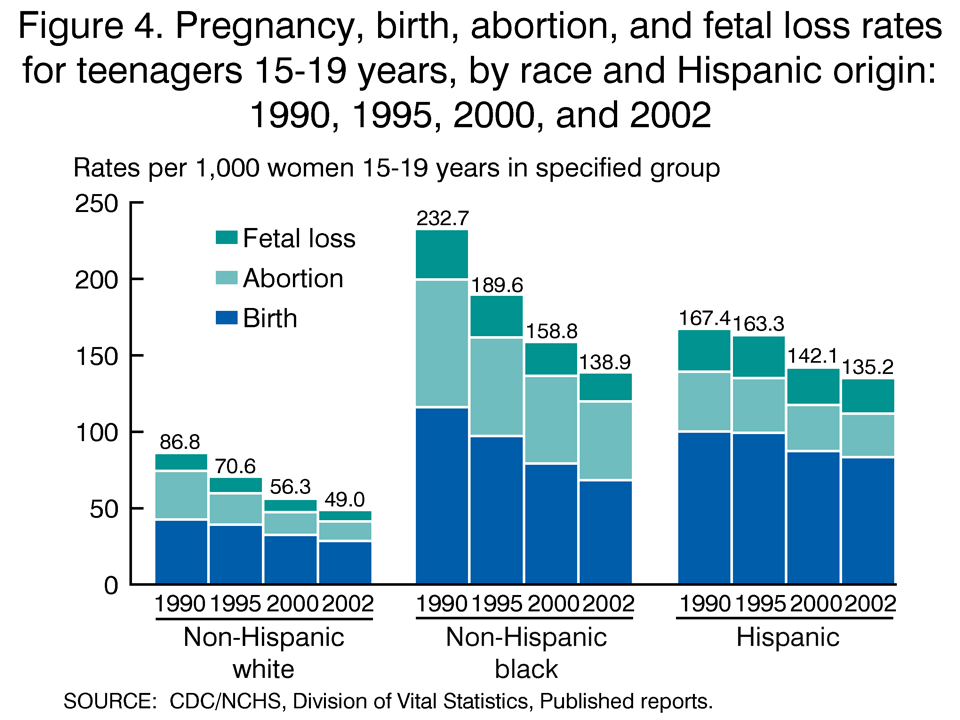
Teen Pregnancy in the United States: A Comprehensive Overview of 2002 Statistics
Introduction
Teen pregnancy remains a significant public health concern in the United States, with far-reaching consequences for both the teenage mother and her child. In 2002, the United States had one of the highest teen pregnancy rates among developed nations, with approximately 750,000 pregnancies occurring among women aged 15-19. This article provides a comprehensive overview of the 2002 statistics on teen pregnancy in the United States, examining the prevalence, risk factors, and consequences associated with this issue.
Prevalence of Teen Pregnancy
According to the Centers for Disease Control and Prevention (CDC), the teen pregnancy rate in the United States in 2002 was 40.5 pregnancies per 1,000 women aged 15-19. This rate represented a slight decline from the previous year, but it was still significantly higher than the rates in other developed countries. The teen pregnancy rate varied widely by race and ethnicity, with the highest rates among Hispanic and African American teenagers.
Risk Factors for Teen Pregnancy
Numerous factors contribute to the risk of teen pregnancy, including:
- Socioeconomic status: Teenagers from low-income families are more likely to become pregnant than those from higher-income families.
- Education: Teenagers who do not complete high school are more likely to become pregnant than those who do.
- Family structure: Teenagers who live in single-parent households or who have experienced family instability are more likely to become pregnant.
- Peer pressure: Teenagers who have friends who are pregnant are more likely to become pregnant themselves.
- Lack of access to contraception: Teenagers who do not have access to affordable and reliable contraception are more likely to become pregnant.
Consequences of Teen Pregnancy
Teen pregnancy has numerous negative consequences for both the teenage mother and her child. These consequences include:
- Health risks: Teen mothers are more likely to experience health problems during pregnancy and childbirth, such as preeclampsia, premature birth, and low birth weight.
- Educational attainment: Teen mothers are less likely to complete high school and college than their peers who do not become pregnant.
- Economic challenges: Teen mothers are more likely to live in poverty and to experience unemployment.
- Child development: Children born to teen mothers are more likely to have health problems, developmental delays, and behavioral issues.
Prevention of Teen Pregnancy
Preventing teen pregnancy requires a multifaceted approach that addresses the underlying risk factors. Effective prevention strategies include:
- Comprehensive sex education: Teenagers who receive comprehensive sex education are more likely to delay sexual activity and to use contraception when they do become sexually active.
- Access to contraception: Teenagers who have access to affordable and reliable contraception are less likely to become pregnant.
- Support for families: Teenagers who have strong family support are less likely to become pregnant.
- Community-based programs: Community-based programs that provide support and resources to teenagers can help to reduce the risk of teen pregnancy.
Conclusion
Teen pregnancy remains a significant public health concern in the United States. The 2002 statistics highlight the prevalence, risk factors, and consequences associated with this issue. Addressing the underlying causes of teen pregnancy and implementing effective prevention strategies are essential to reducing the number of teenage pregnancies and improving the health and well-being of both teenage mothers and their children.